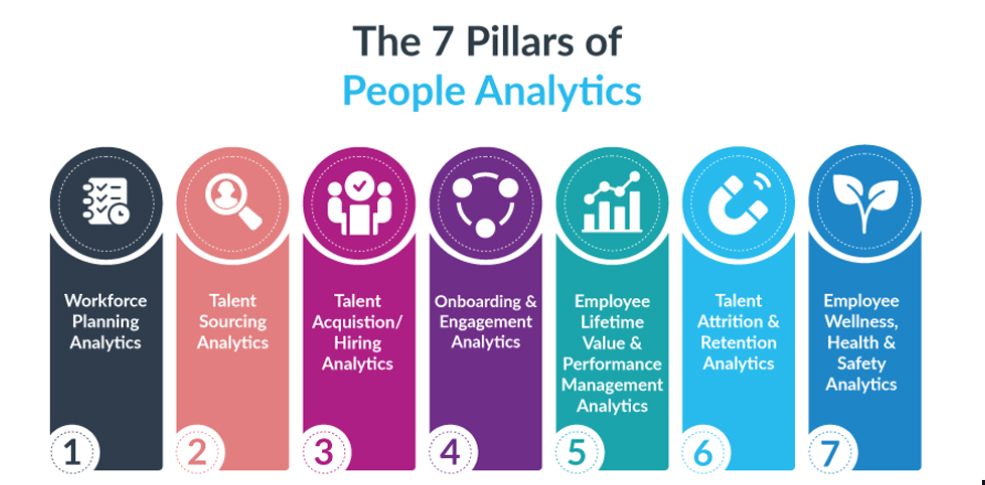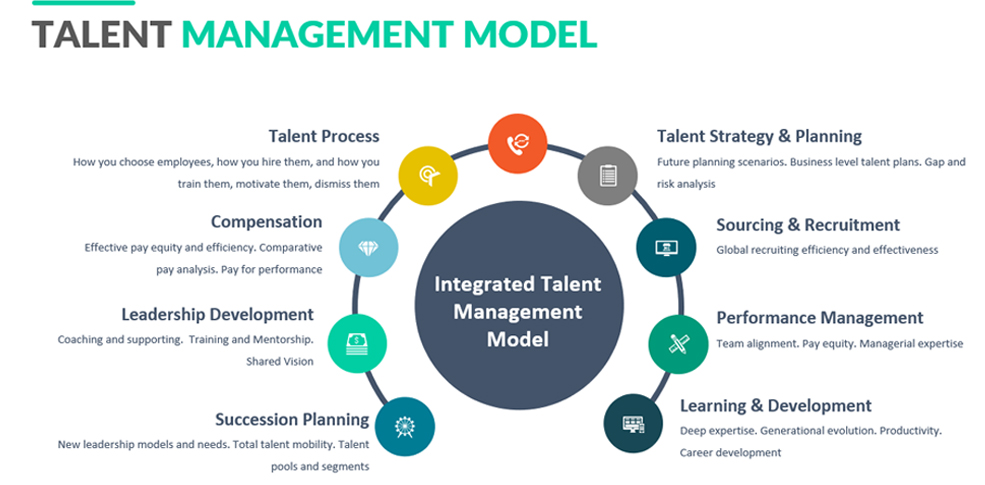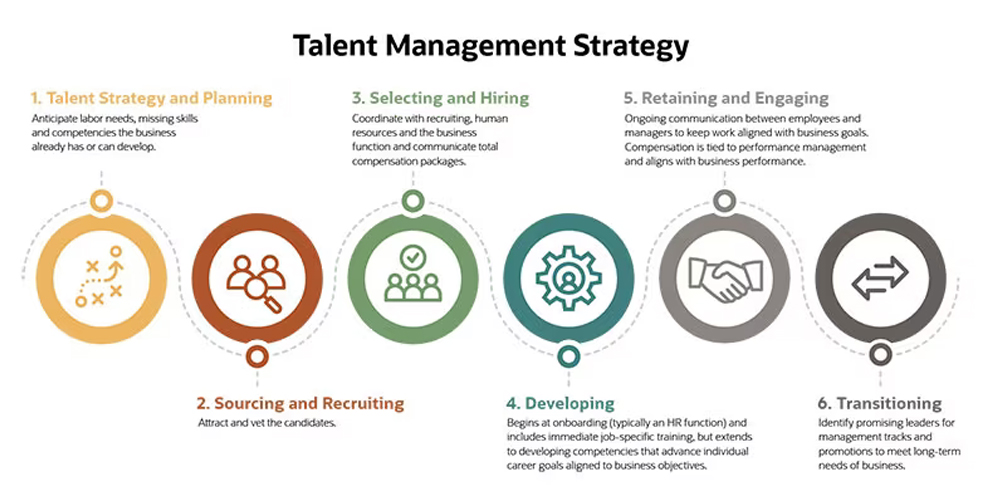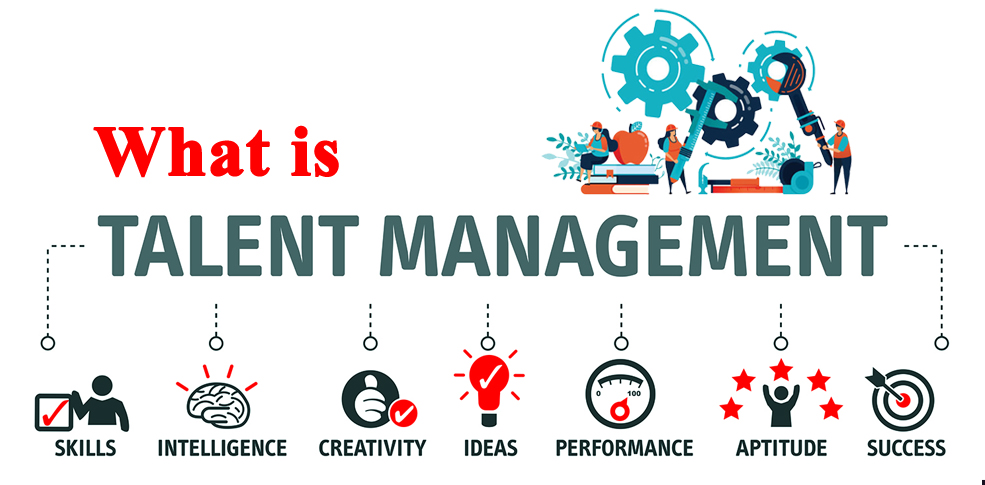Unveiling the Art of Talent Management
While offering competitive salaries and conducting annual reviews remain essential HR functions, today’s dynamic and talent-driven landscape necessitates a more strategic and holistic approach to managing your workforce. Enter talent management: a comprehensive philosophy that transcends traditional methods, fostering a thriving workforce and fueling organizational success. But what exactly is talent management, and how does it translate into tangible benefits for businesses? Let’s delve deeper, exploring its definition, strategic pillars, effective processes, and popular models.
Demystifying the Core: What is Talent Management, Really?
Imagine talent management not just as a set of HR practices, but as a strategic journey. It’s the systematic and planned process of attracting, retaining, and developing high-performing individuals, encompassing everything from hiring and onboarding to learning and development, performance management, and career progression. Think of it as nurturing your greatest asset – your people – from the moment they join your organization until they reach their full potential.

Building the Foundation: The Pillars of Successful Talent Management
Effective talent management rests on four crucial pillars, each playing a distinct yet interconnected role:
1. Acquisition: Attracting the right talent starts with understanding your needs. Conduct thorough job analyses, identify required skills and competencies, and create a compelling employer brand that resonates with your target candidates. Utilize diverse recruitment channels, tap into employee referrals, and design a smooth onboarding experience to welcome new hires seamlessly.
2. Development: Foster a growth mindset within your organization by providing ongoing learning and development opportunities. Offer training programs, mentorship initiatives, and access to relevant resources to equip your people with the skills they need to thrive in a dynamic environment. Think leadership development programs for high-potential employees, technical skills training for specific roles, or soft skills workshops for everyone.
3. Engagement: Keep your employees motivated and invested in their work by fostering open communication, recognizing achievements, and creating a positive work environment. Encourage feedback, empower decision-making, and promote collaboration to cultivate a sense of belonging and purpose. Utilize employee engagement surveys to gauge sentiment and implement targeted initiatives to address concerns and boost morale.
4. Retention: Don’t let your top talent slip through your fingers! Prioritize competitive compensation and benefits, offer meaningful career advancement opportunities, and demonstrate genuine appreciation for your employees’ contributions. Remember, retaining talent is often more cost-effective than acquiring new. Invest in stay interviews to understand employee needs and concerns, and implement targeted retention strategies like flexible work arrangements or internal career mobility programs.

Charting the Course: The Talent Management Process
Now, how do you translate these lofty goals into action? Let’s explore the key phases of the talent management journey:
1. Talent Planning: This is where you map your course. Conduct a thorough analysis of your current workforce, identify skills gaps, and anticipate future needs based on business goals and market trends. This analysis serves as the foundation for your talent management strategy.
2. Talent Acquisition: With a clear understanding of your needs, it’s time to attract and hire the right individuals. Leverage diverse recruitment methods like online job boards, employee referrals, social media, and targeted advertising. Prioritize cultural fit during the selection process to ensure new hires seamlessly integrate into your team.
3. Onboarding: First impressions matter! Design a smooth onboarding program that introduces new hires to the company culture, their roles and responsibilities, and key colleagues. Provide necessary training and resources to help them integrate quickly and become productive members of the team.
4. Performance Management: Establish clear performance expectations, provide regular feedback (both formal and informal), and create opportunities for growth and development through coaching and mentoring. Utilize performance management systems to track progress, identify areas for improvement, and celebrate achievements.
5. Learning and Development: Offer a variety of learning opportunities to cater to different learning styles and preferences. This could include training programs, workshops, online courses, conferences, and even mentorship programs. Encourage continuous learning by providing access to resources and supporting employee-driven initiatives.
6. Career Development: Support employees in charting their career path within the organization. Offer career counseling, mentorship programs, and access to relevant training and development opportunities. Conduct career development discussions to understand individual aspirations and align them with organizational needs.
7. Compensation and Benefits: Offer competitive compensation packages that reflect employee performance, experience, and market value. Provide attractive benefits that cater to diverse needs, such as healthcare, retirement plans, parental leave, and flexible work arrangements. Remember, compensation and benefits are key factors in employee satisfaction and retention.
8. Talent Retention: Implement initiatives to keep your talented employees engaged and satisfied, reducing turnover and fostering a long-term commitment to the organization. Conduct stay interviews to understand employee needs and concerns, and implement targeted retention strategies like flexible work arrangements, internal career mobility programs, or recognition and reward programs. Remember, engaged employees are more productive and contribute significantly to organizational success.

Choosing Your Path: Popular Talent Management Models
Several talent management models offer frameworks for implementing effective strategies. Choose the model that best resonates with your organizational culture and context:
- The 9-Box Model: Categorizes employees based on their performance and potential, aiding in development and retention decisions. This model helps identify high-potential employees who require nurturing and development, as well as individuals who might need reskilling or career transition support.
- The McKinsey 7S Framework: Aligns strategy, structure, skills, systems, style, shared values, and staff to ensure all elements of your organization support your talent management efforts. This comprehensive framework helps ensure your talent management initiatives are integrated with your overall business strategy.
- The Competency-Based Model: Defines key competencies needed for success in specific roles, guiding recruitment, training, and development initiatives. This model helps ensure you hire individuals with the right skills and abilities, and equip them with the knowledge and experience they need to excel in their positions.
Remember: The “best” model depends on your unique needs and organizational context. Choose a framework that provides a clear roadmap for talent management success and allows you to adapt and evolve as your organization grows and changes.

The Enduring Journey: A Thriving Workforce, a Flourishing Organization
By embarking on a strategic talent management journey, organizations unlock a wealth of benefits that go beyond individual employee growth:
- Increased employee engagement and satisfaction: Engaged employees are more productive, innovative, and likely to stay with the organization.
- Improved performance and productivity: A skilled and motivated workforce delivers better results, contributing to increased profitability and market share.
- Enhanced innovation and creativity: A culture of learning and development fosters creative thinking and problem-solving, leading to innovative solutions and improved competitiveness.
- Reduced turnover and talent retention: Retaining top talent saves costs associated with recruitment and training, and ensures organizational knowledge and experience are preserved.
- Stronger employer brand and competitive advantage: Investing in your people showcases your commitment to talent development, attracting and retaining the best minds in the industry.
In today’s dynamic and competitive world, organizations that prioritize talent management gain a significant edge. By nurturing their people’s potential, fostering a positive work environment, and providing continuous learning opportunities, organizations can cultivate a thriving workforce that drives sustainable success. Remember, talent management is not a one-time event; it’s an ongoing journey that requires commitment, strategic planning, and continuous improvement. So, embrace the art of talent management, watch your people blossom, and witness your organization reach new heights.

Empowering Your Talent Journey with Green LMS:
On this exciting journey of cultivating talent and fostering continuous learning, consider collaborating with Green LMS, a powerful learning management system (LMS) designed to empower your L&D and talent development initiatives. Imagine Green LMS as your digital coach, streamlining talent development and optimizing the learning experience for everyone. Here’s how Green LMS can be your champion:
- Curated Content Library: Access a vast collection of high-quality learning materials, courses, and resources aligned with your specific needs and goals. Green LMS goes beyond simply providing content; its expert team curates and tailors resources, saving you time and ensuring your employees have access to the most relevant and reliable information.
- Personalized Learning Paths: Create customized learning pathways that adapt to each employee’s pace, learning style, and preferences. Green LMS’s intuitive interface allows you to set learning goals, track progress, and choose from various learning formats like videos, articles, quizzes, and interactive simulations. No more rigid structures – you take the wheel and design a learning journey that truly resonates with each individual.
- Engaging Learning Activities: Ditch passive learning and dive into immersive experiences. Green LMS incorporates gamified elements, collaborative challenges, and real-world application exercises to keep your employees motivated and engaged. Remember, active learning leads to deeper understanding and lasting knowledge retention.
- Data-Driven Insights: Gain valuable insights into your employees’ learning progress with Green LMS’s comprehensive analytics tools. Track performance, identify areas for improvement, and celebrate achievements. This data-driven approach allows you to make informed decisions and optimize your L&D strategy for maximum impact.
- Scalability and Cost-Effectiveness: Green LMS adapts to organizations of all sizes, seamlessly scaling to accommodate your growing workforce. Its flexible pricing plans ensure you get the most value for your investment, without sacrificing on quality or features.
By choosing Green LMS, you’re not just investing in a platform; you’re investing in a partner committed to your success. With Green LMS by your side, you can cultivate a culture of continuous learning, empower your employees to reach their full potential, and watch your business flourish like a true champion. Click here and book a free Demo LMS for Business , LMS for School and LMS for Corporate boost your organization with an effective LMS for education for all.


